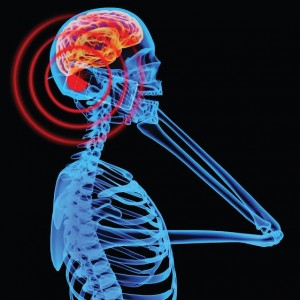A hazy cloud of science and skepticism has hovered over the health concerns of cell phones for decades. In recent years, scientific research and popular media have focused on one major question: Do cell phones cause cancer?
The effects of cell phones on the human body have been studied for years. The answer offered by many of these papers is that we still cannot be certain of the health impacts. Yet every year, major news sources jump on some new evidence supporting the link between cell phones and cancer, creating a false sense of certainty about the issue. As controversy continues to build over whether cell phone radiation is inherently carcinogenic, it is important to be aware that the scientific community remains divided. Contrary to some dramatic media reports, there is no strong evidence that cell phones lead to cancer.
Many who oppose such a link between cell phones and cancer base their skepticism in how cellphone radiation could possibly cause cancer. Cell phones rely on microwave radiation, part of the nonionizing region of the electromagnetic spectrum. The ionizing region includes ultraviolet light, x-rays, and gamma rays, which can all alter genetic material and interfere with cell growth. These types of radioactivity are thus regarded to be carcinogenic. Nonionizing radiation, on the other hand, is not known to interfere directly with cellular processes, so cell phone radiation is not considered carcinogenic. Though some argue for an indirect mechanism by which cell phone radiation could alter genes, no such mechanism has been proven.

Some studies, however, put forth evidence that there may be a link between cell phones and cancer. In the 13-nation Interphone study published in 2011, participants with and without brain cancer were asked about their history of cellphone use. Interphone found that a long-term exposure of the brain’s temporal lobe to cell phone radiation was correlated with a slightly higher risk of some cancers. A similar Swedish study also found this correlation. However, both studies relied on voluntary interviews and have been criticized because they were susceptible to unreliable memory and selection bias. Related studies seem to run into similar problems of bias, or even alteration of results.
Other studies have concluded that no significant correlation between cell phone use and cancer exists. Most recently, an eleven-year study conducted by the Mobile Telecommunications and Health Research Programme (MTHR) focused on people’s exposure to both cell phones and cell phone base stations. The researchers, who published their results in 2013, suggested that no causal relationship exists between mobile phone use and cancer. Controversy arose since the MTHR was co-funded by the cell phone industry. Some people, remembering the tobacco industry’s fight to hide the link between smoking and lung cancer, are wary that cell phone companies are trying to skew results.
By and large, these contrasting studies and conflicting opinions lead to two main takeaways. First, most studies on the cell phone-cancer link have been reported to suffer from various types of bias or collusion, and it is difficult to tease out which studies have reliable results. Part of the issue is how to tackle the problem of measuring past cell phone use; if recall is to be disregarded because of potential memory bias, then studies must follow each subject’s cell phone use. Because these studies are all epidemiological, it is important to eliminate any confounding variables, and with the current haziness over data, researchers are hesitant to make sweeping claims about the link between cell phones and cancer. The World Health Organization categorizes mobile radiation as “possibly carcinogenic,” but no definitive decision has been released.
Second, most studies agree that significant uncertainty remains when analyzing data collected over such short periods of time. The MTHR study lasted eleven years, but it is possible that the cancer-related effects of cell phones only set in after more than a decade. Many researchers, even those of the Interphone study, suggest that longer-term studies would produce more definitive results. More studies like the MTHR are needed in order to reach conclusions about the long-term effects of cell phone radiation. Currently, a European study called COSMOS is addressing the issue by looking at the cell phone habits of about 300,000 people in several countries. COSMOS and similar studies will hopefully shed light onto whether the link between cell phones and cancer truly exists.
For now, we should understand that the scientific community is still unsure of whether cell phone radiation is carcinogenic. Media claims are highly overblown, and creating a false sense of danger around cellphone use can be harmful. We should be wary of news headlines that sound more decisive than the scientists themselves.
